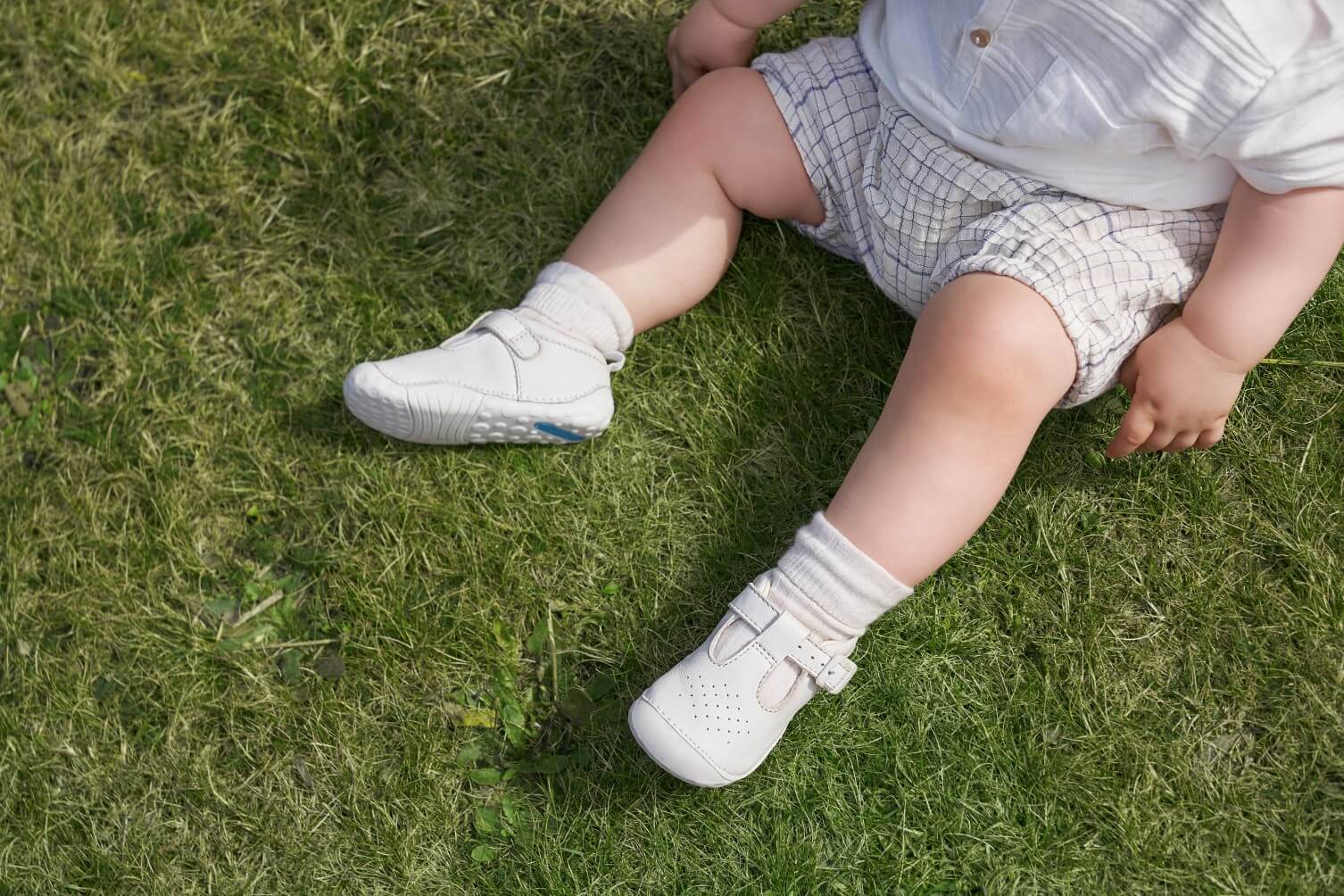
Keeping baby socks on can often feel like an impossible task. Babies have a knack for wriggling and pulling off their socks, leaving you frustrated and constantly having to search for lost socks. In this article, we will explore the reasons why babies struggle to keep socks on and things you can try to prevent this. If you’re unsure whether socks are a good idea, check out our ‘do babies need socks’ article.
One of the main reasons why babies struggle to keep their socks on is their natural curiosity and desire to explore their surroundings. As babies grow and develop, they become more aware of their hands and feet, and they can't resist the urge to touch and grab everything in sight, including their socks. Additionally, their developing motor skills make it easier for them to pull off their socks with their tiny fingers.
Another reason is ill-fitting or low-quality socks. If the socks are too big or too loose, they are more likely to slip off the baby's feet.
Below are a few ways to help keep socks on your little one's feet.
When buying socks for your baby, carefully consider the size and quality. Look for socks that are specifically designed for babies, with sizes and designs tailored to their tiny feet.
To ensure the socks fit properly and stay on your baby's feet, it's essential to check the fit regularly. Babies grow quickly, so socks that were once snug may become too tight or small before you know it. Socks that are too tight may restrict circulation or cause discomfort, making your baby want to kick or pull them off. On the other hand, socks that are too loose may easily slip off.
When checking the fit of baby socks, pay attention to the length and width. The socks should be long enough to cover the entire foot and reach above the ankle. They should also be wide enough to comfortably accommodate your little one's foot without squeezing or leaving marks. Flexibility is crucial, so ensure the socks have some stretch to allow for natural movements.
High-quality socks are beneficial for keeping them on your little one’s feet because they are made with durable materials that can withstand the movements and tugging of active babies. Cheap, low-quality socks may easily stretch out or lose their elasticity, causing them to slide off and become loose on your baby's feet. Opt for high-quality socks that are designed to stay in place and retain their shape even with constant movement.
As well as their durability, high-quality socks also provide better comfort for your baby. They are often made from soft and breathable materials, such as cotton or bamboo, which are gentle on the baby's skin and help to regulate temperature. Scratchy or uncomfortable socks may prompt your baby to pull them off or become irritable, leading to the struggle of keeping socks on.
One effective technique to prevent babies from removing their socks is to put them on before dressing them in bottoms. This way, the bottoms act as a barrier and help keep the socks tucked in.
This works best when dressing them in leggings or trousers that aren’t too loose. Additionally, you could try longer length socks which will be more difficult for your baby to pull over successfully.
Including clothes with built-in socks, such as tights and baby-grows, can be an excellent solution to the constant struggle of keeping your baby’s socks on. It saves you time and effort, as well as the frustration of finding matching socks or the hassle of constantly searching for missing or lost socks!
These types of clothing items eliminate the need for separate socks, ensuring that the socks stay in place and provide maximum coverage for your baby's feet.
Tights are particularly useful during colder months when you want to keep your baby's legs warm and protected. The foot portion of tights is integrated into the garment, making it tricky for your baby to remove or pull them off. Additionally, tights provide an extra layer of insulation, keeping your baby cozy in chilly weather.
Baby-grows, also known as rompers or onesies, often have built-in feet or foot covers. These footed clothing items are convenient for newborns and younger babies who are more likely to kick off or lose their socks. Baby-grows with built-in socks provide an all-in-one solution, ensuring that your baby's feet are always covered and warm.
If the weather permits or if you're going out, consider putting shoes on your baby. Shoes can help secure the socks in place and provide an additional layer of protection and warmth. For newborns go for soft-soled pram shoes that provide freedom of movement and allow the baby's feet to grow naturally.
If your baby is a little older and tends to be crawling on hard surfaces, a pre-walking shoe is the best option. These will not only help your baby keep their socks on, but also provide excellent protection to their tiny toes when trying to explore cold or hard surfaces.
Keep your baby's hands occupied with toys or other objects to divert their attention away from their feet and they'll be less likely to pull off their socks. This technique can be particularly useful during nappy changes or when putting the socks on initially.
Remember, keeping socks on your baby's feet may require some trial and error. Every baby is unique and may respond differently to various techniques. It's essential to be patient and flexible, trying different approaches until you find what works best for your little one.
In conclusion, while keeping baby socks on can be a challenge, there are several techniques you can use to increase their staying power. Choose the right size and quality, put socks on after bottoms, distract their hands, or consider shoes. With a little perseverance and creativity, you can help keep those tiny feet cosy and warm.
Author: Amanda, published 06-09-2023.